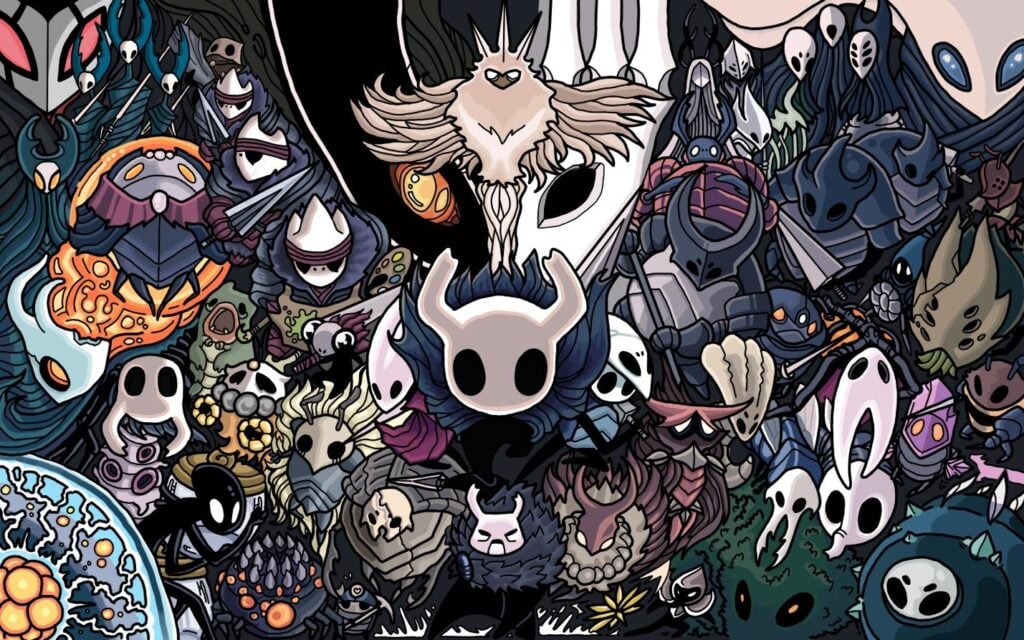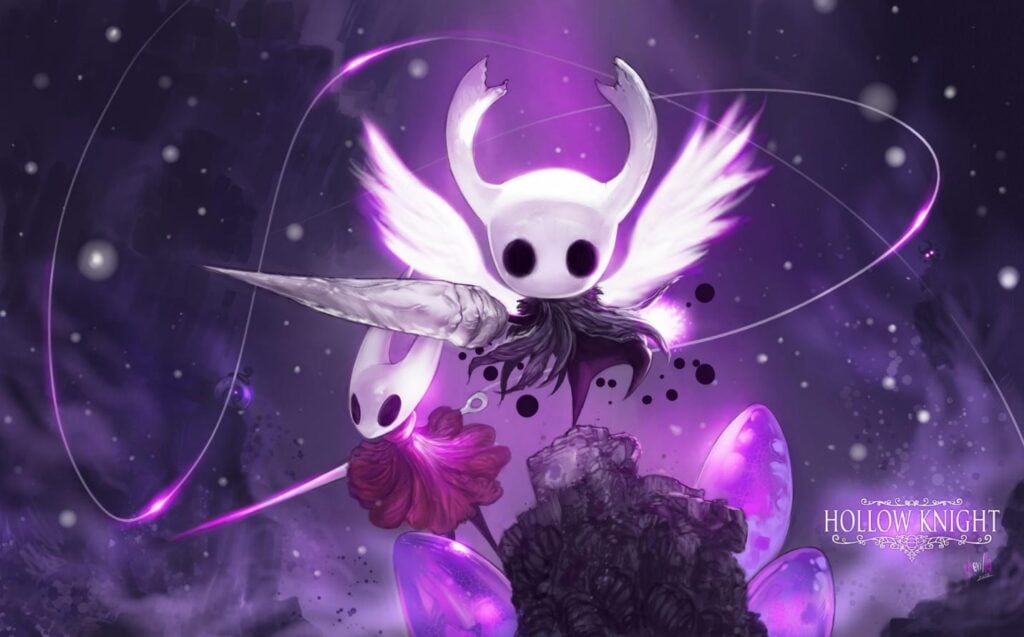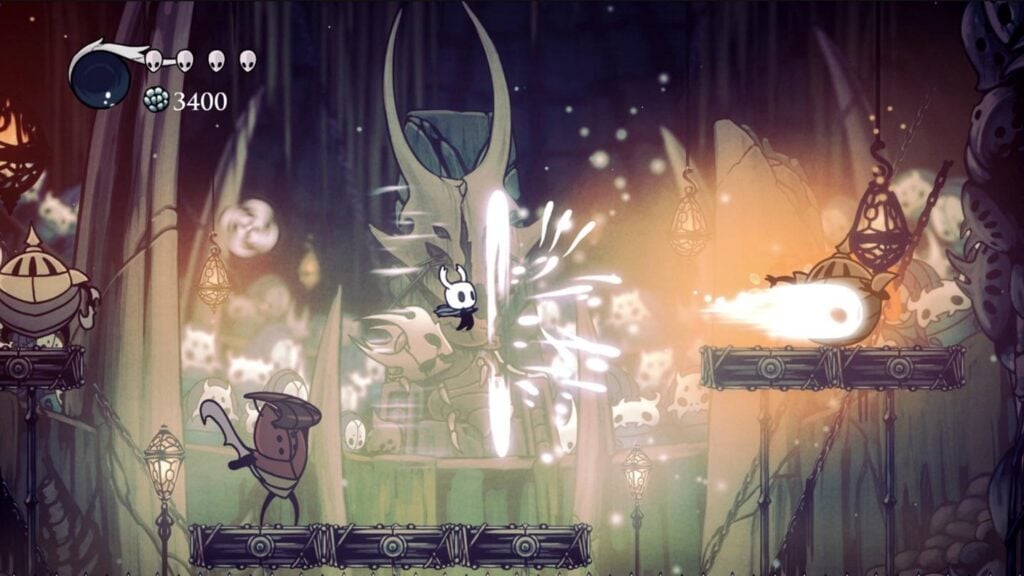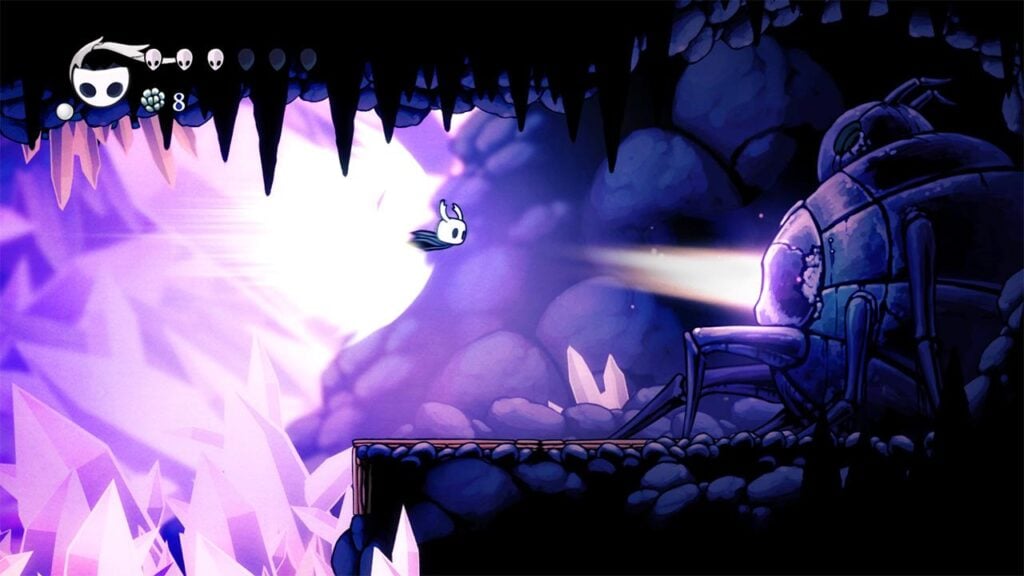When Hollow Knight burst onto the scene in 2017, it felt like a story out of a developer’s fairy tale. Here was a sprawling, painterly Metroidvania crafted not by a massive, resource-rich studio, but by a tiny team in Adelaide, Australia. The thing that still amazes me? I’ve seen bigger teams struggle to get a tutorial level out the door, yet Team Cherry somehow delivered a 30+ hour journey packed with haunting beauty, pinpoint gameplay, and a world that begs to be explored. This is the story of the making of Hollow Knight.

1. The Tiny Team That Dreamed Big — The Making of Hollow Knight
You might be wondering, “How was Hollow Knight made with such a small team?” It began with just three core members: Ari Gibson, William Pellen, and later David Kazi on programming support. While major studios have departments for each role, Team Cherry juggled art, design, writing, coding, and marketing themselves. Their secret weapon? A shared vision that never bent under pressure.
What made it connect with so many? I think it’s because Hallownest feels personal — it’s full of deliberate choices, spaces that clearly had human hands shaping them, and the sort of character that’s hard to mass-produce. You can almost feel each brushstroke in the art and each carefully timed pause in its soundtrack.
2. The Birth of Team Cherry — From Game Jam to Global Stage
It all started at a game jam in 2013, where William and Ari built a small prototype about bug-like knights in a crumbling underground world. The creative spark was instant. That 48-hour jam seed eventually grew into a Kickstarter campaign in late 2014, seeking AU$35,000. By the end, over 2,100 backers had chipped in AU$57,000, giving the project wings.
In the context of the making of Hollow Knight, so “Who created Hollow Knight?” — it was the work of Ari Gibson (art and animation), William Pellen (design and writing), and David Kazi (programming and technical support). Their background wasn’t filled with blockbuster credits; they simply brought an obsessive attention to detail and a willingness to learn as they went.
3. Narrative Design — How the Story is Told Without Telling
Stepping into Hallownest, you’re not spoon-fed exposition. Instead, you learn its history through crumbling buildings, snatches of dialogue from strangers, or the design of an ancient statue tucked in a forgotten corner. The approach makes you ask, “Why is Hollow Knight’s story so mysterious?”
That was intentional from day one. William Pellen believed mystery was more engaging than clarity — letting players stitch together the saga of the Pale King, the Infection, and the sacrifices made to protect Hallownest. Development-wise, this also meant they could expand the lore through visuals without the burden of recording heavy VO or long cutscenes, keeping the game within scope.

4. Art Direction — Hand-Drawn Beauty and Gothic Charm
The moment you look at the making of Hollow Knight, you recognize Ari Gibson’s hand-drawn style: clean outlines, just enough detail to make characters pop, and silky animation that makes your knight’s cloak flow like liquid ink. The world blends insectoid designs with European gothic arches, as if a medieval illustrator had been asked to sketch an ant colony.
If you’ve wondered, “Who designed Hollow Knight’s art and animation?”, the answer is Gibson alone — a staggering feat considering the thousands of frames needed. His past in animation shows in how even the smallest worm in the background feels alive.
5. Music and Atmosphere — Christopher Larkin’s Soundscape
Christopher Larkin’s score carries as much narrative weight as any NPC. In the quiet crossroads, airy piano motives suggest hope; in City of Tears, mournful strings drip sadness like the rain outside your screen. The boss themes, meanwhile, can whip your pulse into overdrive.
So “Who made Hollow Knight’s music and why does it feel so emotional?” It’s Larkin’s magic: minimalist orchestrations that leave room for the player’s imagination to bloom. He worked closely with Ari and William, adjusting motifs to shift subtly when revisiting areas or completing story beats, creating a subconscious bond between music and progress.

6. Technical Foundation — Tools, Engine, and Level Design
Related to the making of Hollow Knight, Hollow Knight runs on Unity — a fact that’s almost as inspiring as the game itself. Unity’s flexibility and low licensing cost made it possible for Team Cherry to build huge maps without bespoke engine work. But that didn’t mean it was easy.
“What game engine powers Hollow Knight?” — definitely Unity, but heavily customized with their own level-editing tools. They built Hallownest as an interconnected puzzle box: each biome designed to fold back into others, with clever shortcuts that rewarded curiosity while keeping performance smooth on PC, Switch, and consoles.
7. Core Gameplay Philosophy — A Metroidvania with Weight and Precision
There’s a reason swinging the nail feels so satisfying. Every jump arc, every slash timing was tuned until it could pass both the “fun” test and the “fair” test. Movement borrows the elegance of Metroid, the layered exploration of Castlevania: Symphony of the Night, and a touch of Dark Souls melancholy.
When people ask, “Why does the movement and combat feel so good?”, it’s because Team Cherry refused to use placeholder physics. They iterated constantly, ensuring that dodge distances matched enemy tells and that upgrades expanded playstyle without making earlier zones trivial.

8. Challenges of Indie Development
Scope creep nearly sunk them. At one point in the making of Hollow Knight, the game’s map ballooned far beyond the original prototypes. Each new zone added coding needs, art assets, and test cycles. Delays became inevitable.
So “What was the biggest hurdle in making Hollow Knight?” — balancing ambition with reality. They were honest with backers and fans, communicating delays as part of the organic growth of Hallownest rather than as mistakes. It’s rare for a small team to stay transparent and still maintain excitement, but they did.
9. Release, Reception, and the Rise of a Fandom
Hollow Knight’s February 2017 PC release wasn’t met with fanfare from giant billboards — instead, it spread like a secret worth whispering. Review scores hovered in the high 80s to 90s, and players turned into evangelists overnight.
“How did Hollow Knight become so popular without a huge marketing budget?” Word of mouth. Streamers showcased it, critics nurtured it with long-form features, and the free post-launch DLCs (like Hidden Dreams, The Grimm Troupe, Lifeblood, Godmaster) gave fans more reasons to keep talking.

10. Legacy and the Road to Silksong
Four DLCs later, Hallownest had grown into one of the richest worlds in indie history, influencing countless other Metroidvanias and even inspiring academic essays on game storytelling. Now all eyes are on Hollow Knight: Silksong, starring Hornet.
“Did success change how Team Cherry approaches Silksong?” In interviews, they’ve hinted it has — the scope is larger from the start, but they’re cautious not to rush. If Hollow Knight taught them anything, it’s that trust is built through care, not speed.
Final Word — When a Small Dream Becomes a Big World
For me, the making of Hollow Knight is proof that limitations can spark brilliance. Here’s a game with no cinematic budget, no celebrity VO cast, no AAA publishing machine — just three people, a shared passion, and the determination to make Hallownest real. And they didn’t just make a game; they made a place we wanted to live in, even when it broke our hearts. If you’ve ever looked at the credits of a game and thought, “I could never do that,” Hollow Knight should be your reminder: sometimes the most resonant worlds are built in the smallest rooms.
FAQs
Q1: How long did Hollow Knight take to develop from prototype to release?
It took just over three years, starting from the 2014 game jam concept to the 2017 PC launch, with DLC expansions following into 2018.
Q2: Which platforms did Hollow Knight release on first, and in what order?
It launched first on PC (Windows) in February 2017, followed by macOS/Linux that April, Nintendo Switch in 2018, and PlayStation 4/Xbox One later that year.
Q3: How many zones are in Hollow Knight’s map without DLC?
The base game features 16 main areas, with additional biomes added through the free DLC packs.
Q4: Did Hollow Knight win any major awards after release?
Yes — it earned accolades like the Australian Game Developer Award for Game of the Year and several Best Indie nods from international outlets.


